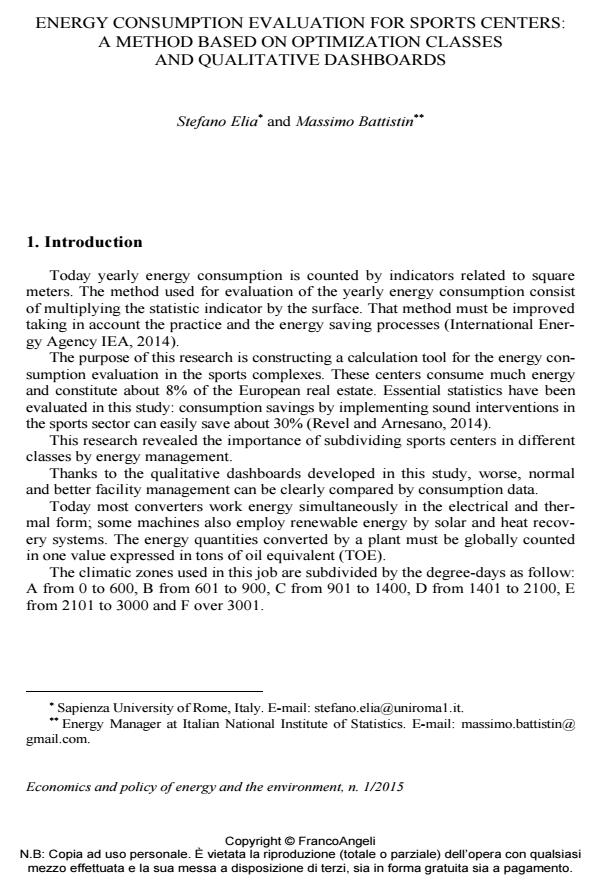Energy consumption evaluation for sports centers: a method based on optimization classes and qualitative dashboards
Titolo Rivista ECONOMICS AND POLICY OF ENERGY AND THE ENVIRONMENT
Autori/Curatori Stefano Elia, Massimo Battistin
Anno di pubblicazione 2016 Fascicolo 2015/1
Lingua Inglese Numero pagine 12 P. 133-144 Dimensione file 301 KB
DOI 10.3280/EFE2015-001009
Il DOI è il codice a barre della proprietà intellettuale: per saperne di più
clicca qui
Qui sotto puoi vedere in anteprima la prima pagina di questo articolo.
Se questo articolo ti interessa, lo puoi acquistare (e scaricare in formato pdf) seguendo le facili indicazioni per acquistare il download credit. Acquista Download Credits per scaricare questo Articolo in formato PDF

FrancoAngeli è membro della Publishers International Linking Association, Inc (PILA)associazione indipendente e non profit per facilitare (attraverso i servizi tecnologici implementati da CrossRef.org) l’accesso degli studiosi ai contenuti digitali nelle pubblicazioni professionali e scientifiche
An evaluation method for sports center energy consumption is herein described. The proposed strategy can be used to estimate energy consumption at early design phase or serves as the baseline for comparison with the real consumption. About 200 sports centers - covering all of Italy - have been evaluated for energy consumption. Sports centers can be grouped into optimization classes based on a number of the saving interventions that have been implemented to save energy. The suitable saving processes are listed below. The consumption indicator of each sports center have been calculated and used in the evaluation model, representing the yearly energy consumption per surface unit of a particular sport structure, per climatic zone and per energy optimization class. The research also proved the non-linear relation between energy consumption and sports complex size. Therefore a scale factor has been calculated for each complex size and adopted. Finally, an innovative qualitative dashboard is proposed. The graphic output clearly links a consumption value to statistic data, showing a comparison with other sports centers data in the same boundary conditions.
Parole chiave:Dashboard, energy saving, sport center, optimization interventions, consumption indicators, mathematical model
Jel codes:L83, Q41, Q55
Stefano Elia, Massimo Battistin, Energy consumption evaluation for sports centers: a method based on optimization classes and qualitative dashboards in "ECONOMICS AND POLICY OF ENERGY AND THE ENVIRONMENT" 1/2015, pp 133-144, DOI: 10.3280/EFE2015-001009